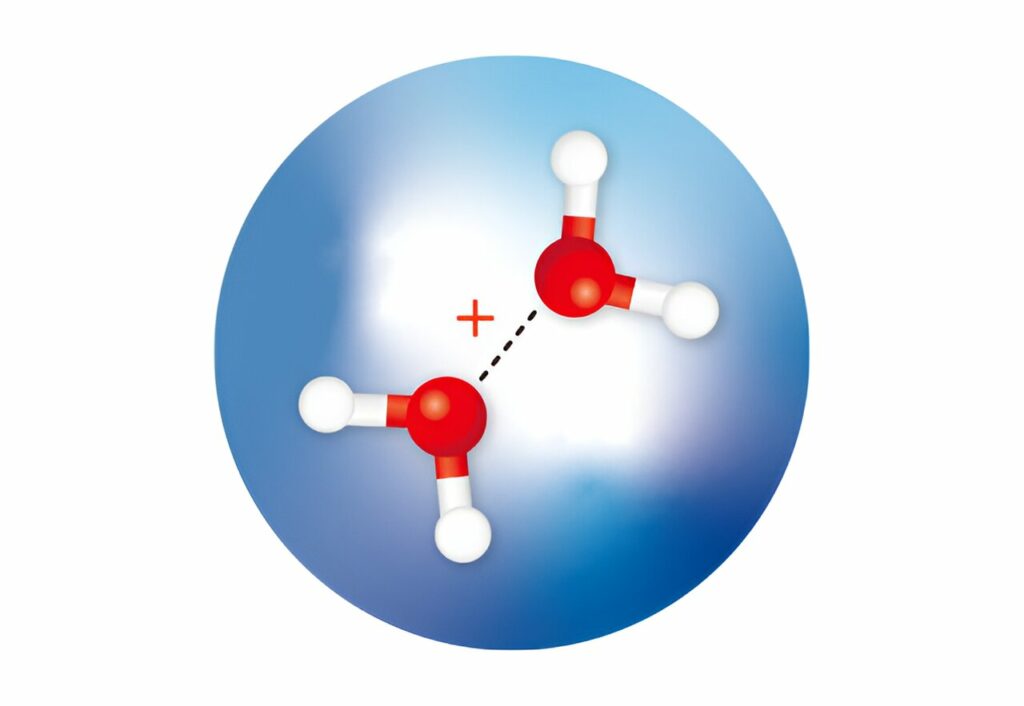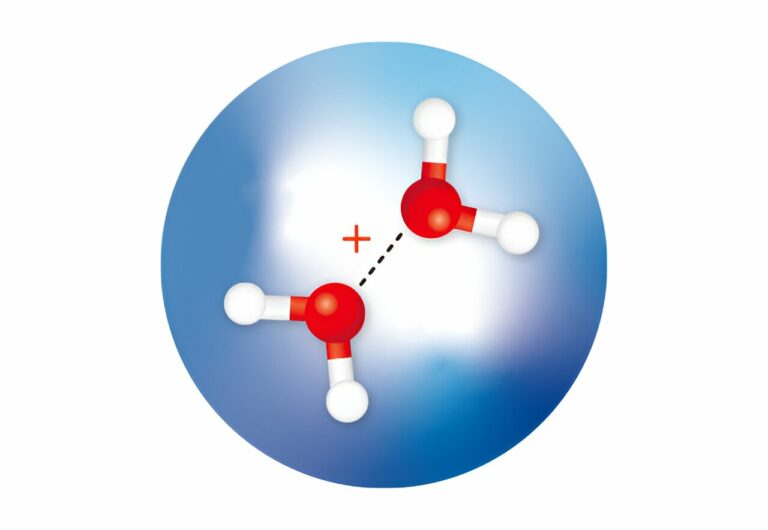Helium Droplets Capture Dual Water Structure
RIKEN chemists have successfully isolated a previously unobserved structure involving two water molecules. This discovery has significant implications for various fields, including astrochemistry and the corrosion of metals. The findings have been published in The Journal of Physical Chemistry Letters.
When an energetic particle or photon interacts with a water molecule, it can remove an electron, resulting in the formation of a positive ion (cation; H2O+) and an electron. This ionization process can initiate a series of reactions with neighboring molecules.
The ionization of water plays crucial roles in biological processes, radiation chemistry, and the corrosion of metal-water interfaces. Understanding the mechanism of water ionization is therefore a fundamental question for physical chemists.
According to calculations, after the ionization of a water molecule, two isomers of a positively charged water dimer ion are rapidly formed. These isomers consist of two water molecules weakly connected by a bond. One isomer, known as H3O+·OH, has been observed and occurs when a proton is transferred from one water molecule to another.
The other isomer, which has a half-bonded (or hemibonded) structure known as (H2O·OH2)+, has never been isolated or confirmed through spectroscopic measurements. Calculations suggest that this isomer has a higher energy compared to the proton-transfer dimer.
Now, Susumu Kuma and his colleagues from the RIKEN Atomic, Molecular and Optical Physics Laboratory have successfully isolated both water dimer ions by trapping them in small droplets of cold helium. The researchers utilized infrared spectroscopy to determine the structures of these ions.

Kuma and his colleagues utilized an ultracold environment to synthesize the isomers. The water molecules within the helium droplets rapidly cooled as helium atoms evaporated from the surface of the droplets. This process resulted in the formation of the metastable hemibonded isomer, which quickly stabilized within the cold droplets.
To investigate the coexistence of the two isomers, Kuma and his team employed computational and spectroscopic methods. The spectroscopic characteristics of the molecular ions closely resembled those of bare ions, devoid of helium surroundings. “This discovery implies that we can directly compare measurements on the bare ions with the outcomes of quantum-chemical calculations,” states Kuma. “This significantly facilitates the structural analysis of the dimers.”
According to Kuma, this finding will stimulate further research in this field. “The identification of the hemibonded water cations will encourage additional investigations into primary events that play a crucial role in comprehending the radiation chemistry of water,” he explains.
Kuma’s team intends to explore other structures that have yet to be observed. “We aim to expand the size of the water complex cations within the helium droplets,” Kuma reveals. “We anticipate discovering previously unobserved, yet significant, chemical structures in the spectra.”
This article is republished from PhysORG under a Creative Commons license. Read the original article.
Do not forget to share your opinion with us to provide you with the best posts !




0 Comments